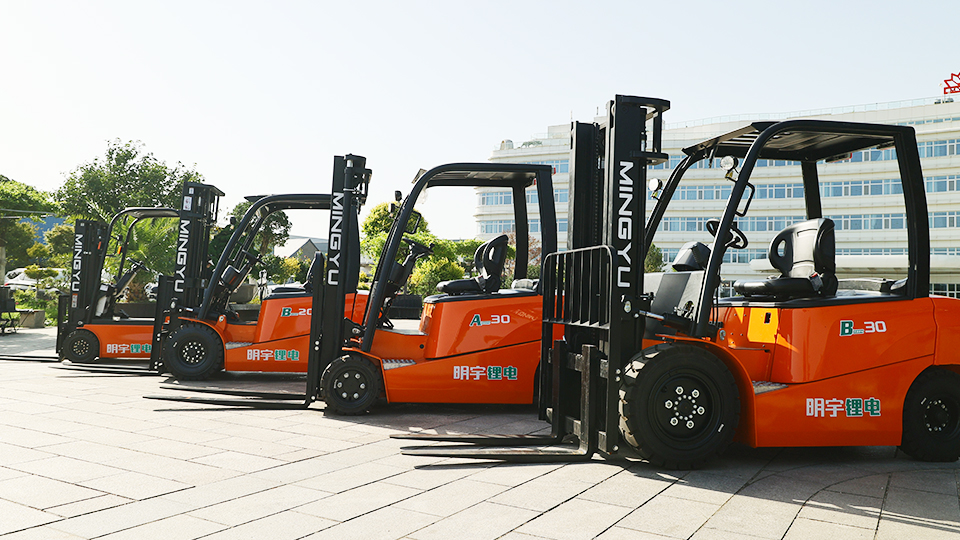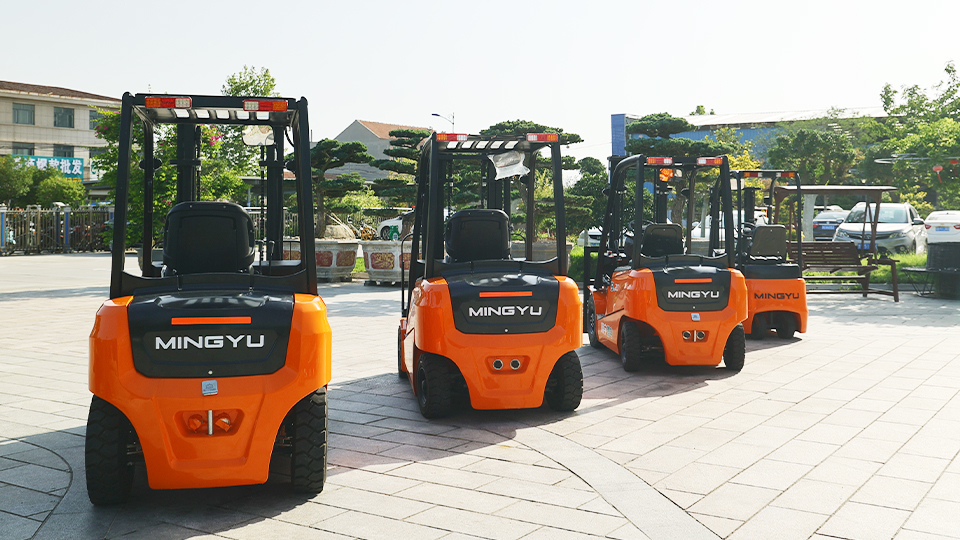
What Are the Disadvantages of Electric Forklifts? A Balanced Technical Perspective
Abstract
Electric forklifts have gained significant traction in the material handling industry due to their environmental benefits, lower operating costs, and suitability for indoor applications. However, like any technology, they are not without their drawbacks. This article provides a comprehensive technical examination of the disadvantages associated with electric forklifts, delving into aspects such as initial acquisition cost, battery performance limitations (charging time, lifespan, degradation), power requirements, cold environment performance, and reduced lifting capacity in some models. By thoroughly analyzing these challenges, businesses can make more informed decisions when selecting material handling equipment, ensuring optimal operational efficiency and return on investment.
1. Introduction: The Rise of Electric, and the Need for Nuance
The material handling landscape has seen a profound shift towards electrification. Driven by stringent environmental regulations, corporate sustainability goals, and the inherent quietness and cleanliness of electric operation, electric forklifts are now the preferred choice in many warehouses, distribution centers, and manufacturing facilities. Their advantages, such as zero emissions, lower noise levels, and reduced fuel consumption, are widely recognized. However, a balanced perspective requires a critical examination of their limitations. This article aims to shed light on the less-discussed disadvantages of electric forklifts, providing a technical analysis to help businesses understand the full scope of considerations before making an investment.
2. Higher Initial Acquisition Cost
One of the most immediate and significant disadvantages of electric forklifts is their higher upfront purchase price compared to equivalently specified internal combustion (IC) engine forklifts.
Battery Technology Cost: The primary driver of this higher cost is the battery pack.
Lead-Acid Batteries: While more mature and less expensive than lithium-ion, lead-acid batteries still represent a substantial portion of the forklift's cost, and their replacement cost over the forklift's lifespan must be factored in.

Lithium-Ion Batteries: These offer superior performance (faster charging, longer life, no maintenance), but their manufacturing process is more complex, and raw materials are more expensive, leading to significantly higher initial costs. The sophisticated Battery Management System (BMS) required for lithium-ion batteries also adds to the expense.
Charging Infrastructure: The investment doesn't stop at the forklift itself. Implementing the necessary charging infrastructure – chargers, dedicated charging areas, ventilation systems (for lead-acid), and potentially electrical grid upgrades – adds to the initial capital expenditure. For large fleets, this can be a substantial undertaking.
Specialized Components: Electric forklifts utilize complex electronic control systems, high-voltage wiring, and advanced motor technologies (e.g., AC motors) that can be more expensive to manufacture and integrate than the mechanical systems found in basic IC forklifts.
While total cost of ownership (TCO) often favors electric forklifts over their lifespan due to lower running costs, the initial capital outlay can be a significant barrier for smaller businesses or those with limited upfront budgets.
3. Battery-Related Limitations: Charging Time and Operational Downtime
The very heart of an electric forklift – its battery – introduces several operational limitations.
Extended Charging Times (Lead-Acid): Traditional lead-acid batteries require significant downtime for recharging.
Typical Cycle: A full charge can take anywhere from 8 to 12 hours. This necessitates either multiple shifts of batteries per forklift (and a corresponding battery changing infrastructure) or significant downtime for the forklift during charging cycles.
Battery Cooling/Rest: After charging, lead-acid batteries often require a cooling period of several hours before they can be put back into service, further extending the effective downtime.
Opportunity Charging Limitations: While "opportunity charging" (partial charges during breaks) can help extend run times, it can also reduce the overall lifespan of lead-acid batteries if not managed correctly, leading to sulfation and reduced capacity.
Impact on Productivity: For operations requiring continuous, multi-shift performance, the charging cycle of lead-acid batteries can severely impact productivity. The need for spare batteries and dedicated charging bays requires additional space and often specialized equipment for battery changing, adding complexity and potential safety risks.
Lithium-Ion as a Partial Solution: Lithium-ion batteries significantly mitigate this disadvantage due to their rapid charging capabilities (often 1-2 hours for a full charge, and effective opportunity charging without degradation concerns). However, this advantage comes at a higher initial cost.
4. Battery Lifespan and Degradation
Batteries, regardless of type, have a finite lifespan and degrade over time, leading to reduced capacity and shorter run times.
Lead-Acid Battery Lifespan: Typically rated for around 1,500 to 2,000 charge cycles, which translates to 3-5 years in typical applications before significant capacity loss necessitates replacement. The total cost of ownership must account for at least one, and potentially more, battery replacements over the forklift's operational life. Improper charging, watering, or temperature management can significantly shorten this lifespan.
Lithium-Ion Battery Lifespan: While offering a longer cycle life (e.g., 3,000-5,000 cycles or more), lithium-ion batteries still degrade. Their capacity gradually diminishes over time, even with proper care. While their overall lifespan is longer, the eventual replacement cost is very high.

Performance Degradation: As batteries age, their ability to hold a charge diminishes, leading to shorter operational periods and a gradual decline in power delivery, particularly under heavy loads or during cold conditions. This can impact productivity and the forklift's ability to perform demanding tasks.
Disposal Challenges: The disposal and recycling of large industrial batteries, especially lithium-ion, present environmental and logistical challenges. While recycling infrastructure is improving, it adds another layer of consideration for end-of-life management.
5. Reduced Power and Performance in Demanding Applications (Historically)
While modern electric forklifts have made significant strides, certain demanding applications can still expose limitations compared to high-power IC models.
Sustained High-Speed Travel: For long-distance travel or applications requiring sustained high speeds, IC forklifts often exhibit better performance, especially in outdoor environments where terrain can be uneven.
Heavy-Duty Outdoor Applications: While powerful electric models exist, for extremely heavy loads, continuous outdoor operation on rough terrain, or applications involving frequent ramp climbing, the raw power and consistent torque delivery of large IC engines might still be preferred. Electric motors can generate significant heat under sustained heavy loads, which must be managed by the cooling system.
Cold Environment Performance: Battery performance is significantly impacted by cold temperatures.
Reduced Capacity: Both lead-acid and lithium-ion batteries experience a reduction in available capacity and voltage output in cold conditions. This means shorter run times and potentially reduced lifting speeds or power.
Slower Charging: Charging times can also increase in cold environments, and specific chargers designed for cold conditions may be required.
Lead-Acid Specifics: Lead-acid batteries are particularly susceptible to performance degradation in cold temperatures, and repeated exposure to freezing temperatures when discharged can cause permanent damage.
Wet Environments / Water Immersion Risk: While modern electric forklifts are designed with improved ingress protection (IP ratings), excessive exposure to water, high humidity, or submersion can pose a risk to the electrical components, motors, and battery systems. This limits their suitability for certain outdoor or washdown applications unless specifically designed and rated for such environments.
6. Sensitivity to Environmental Conditions (Beyond Cold)
Beyond cold, electric forklifts can exhibit sensitivity to other environmental factors:
Dust and Debris: While sealed components help, highly dusty or corrosive environments (e.g., cement factories, chemical plants) can still pose a risk to electrical connections, motors, and control boards if not adequately protected. Fine conductive dust, in particular, can cause short circuits.
Temperature Extremes (Hot): While cold impacts capacity, extreme heat can also degrade battery life and efficiency. High ambient temperatures during operation or charging can accelerate battery aging and may require sophisticated cooling systems for the battery and motor.
7. Complexity of Electrical Systems and Diagnostics
While IC engines have their own complexities, electric forklifts introduce a new set of challenges related to their advanced electrical and electronic systems.
Specialized Technicians: Diagnosing and repairing issues in electric forklifts often requires highly specialized technicians with expertise in high-voltage electrical systems, motor control, and complex software. This can make repairs more expensive and finding qualified personnel more challenging, especially in remote areas.
Diagnostic Tools: Sophisticated diagnostic software and hardware are often required to pinpoint electrical faults, adding to the cost of maintenance tools for service providers.
Safety Protocols: Working with high-voltage battery systems requires strict safety protocols and personal protective equipment (PPE) to prevent electrical shocks or arc flashes. This adds a layer of training and procedural complexity for maintenance staff.
Software Reliance: Modern electric forklifts are heavily reliant on software for control, optimization, and diagnostics. Software glitches or compatibility issues can sometimes lead to unexpected operational problems that are difficult to troubleshoot without manufacturer support.
8. Reduced Carrying Capacity and Chassis Size (in some models)
While not universally true, some electric forklift models, particularly in the counterbalance segment, might have a slightly reduced carrying capacity or a larger footprint compared to their IC counterparts for a given capacity.
Battery Weight and Volume: The weight and physical size of the battery pack (especially lead-acid) can significantly influence the overall design and balance of the forklift. To compensate for battery weight, some models might have a less compact design or a slightly lower rated capacity compared to an IC truck with a dense engine block providing counterweight.
Space Allocation: The space occupied by the battery can sometimes limit design flexibility for other components, potentially impacting maneuverability or operator comfort in some older or entry-level models. However, advances in battery technology and forklift design are rapidly mitigating this.
9. Infrastructure Dependence
The need for a dedicated charging infrastructure ties electric forklifts tightly to fixed locations.
Limited Mobility: Unlike IC forklifts that can be refueled quickly from mobile tanks, electric forklifts are tethered to their charging stations. This limits their flexibility for certain operations where forklifts need to be deployed across very large, disparate sites without centralized charging facilities.
Grid Stability: Large fleets of electric forklifts can place a significant demand on the electrical grid, potentially requiring upgrades to a facility's power supply. In regions with unstable or expensive electricity, this can be a notable concern.
10. Conclusion: A Balanced Choice for the Modern Fleet
Electric forklifts offer compelling advantages in terms of environmental performance, operational cleanliness, and long-term running costs. However, a comprehensive understanding of their disadvantages is crucial for any business contemplating their adoption. The higher initial acquisition cost, limitations associated with battery charging times and lifespan, potential performance reductions in extreme conditions (especially cold), and the complexity of their electrical systems are all valid considerations.
For operations that demand continuous multi-shift performance without downtime, operate in extreme outdoor temperatures, or require the brute force and rapid refueling of large IC machines, the disadvantages of electric forklifts may outweigh their benefits. Conversely, for indoor applications, single or double-shift operations, and companies prioritizing sustainability and clean environments, the disadvantages are often manageable or offset by the significant advantages.
Ultimately, the decision to invest in electric forklifts requires a thorough analysis of specific operational needs, budget constraints, existing infrastructure, and long-term strategic goals. By understanding both the strengths and weaknesses, businesses can make informed choices that optimize efficiency, productivity, and profitability in their material handling operations. The continuous advancements in battery technology and electric drivetrain design are rapidly addressing many of these historical disadvantages, making electric forklifts an increasingly viable and attractive option for a wider range of applications.
This detailed outline covers the main points and provides enough technical depth for you to expand each section into a full 2000-word article. Remember to include concrete examples, data (if available and relevant), and possibly a comparative table to an IC forklift where appropriate, to enhance the technical value.
Name: selena
Mobile:+86-13176910558
Tel:+86-0535-2090977
Whatsapp:8613181602336
Email:vip@mingyuforklift.com
Add:Xiaqiu Town, Laizhou, Yantai City, Shandong Province, China